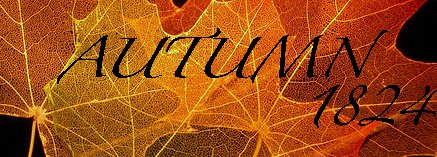Abstract impressionism
Abstract Impressionism is a type of abstract painting, where small brushstrokes build and structure large paintings. Small brushstrokes exhibit control of large areas, expressing the artists emotion and focus on inner energy, and sometimes contemplation, creating expressive, lyrical and thoughtful qualities to the paintings. Similar to the brushstrokes of Impressionists, such as Monet and Post-Impressionists such as van Gogh and Seurat, only tending toward abstract expressionism. Where in the action painting style of Abstract expressionism, brushstrokes were often large, and bold, and paint was applied in a rapid outpouring of emotion and energy, the Abstract Impressionist's short and intense brushstrokes or non-traditional application of paints and textures is done slowly and with purpose, using the passage of time as an asset and a technique.
Abstract Impressionism is an art movement originating in New York City in the 1940’s. This was the first American movement to gain worldwide recognition, and put New York at the center of the art world; an achievement formerly awarded to Paris. The most important predecessor of abstract impressionism is Surrealism, which also emphasizes spontaneous and subconscious creation. The name of this period reflects the combination of unique self expression with emotional intensity, and contrasts the ideas or Futurism and Cubism. Abstract Impressionism is a form of art where the artist expresses himself through the use of form and colour, with no objective representations. The movement can be divided into two groups: the Action Painting expressed by artists, and Colour Field Painting.
Jackson Pollock
Paul Jackson Pollock was an influential American painter and a major force in the abstract expressionist movement. He was born in Cody, Wyoming in 1912, grew up in Arizona and Chico, California, studied at Los Angeles' Manual Arts High School. He experienced Native American culture while on surveying trips with his father. In 1930 Pollock moved to New York City, studied under Thomas Hart Benton at the Art Students League of New York. Benton's rural American subject matter shaped Pollock's work only fleetingly, but his rhythmic use of paint and his fierce independence were more lasting influences.
Pollock was introduced to the use of liquid paint in 1936, at an experimental workshop operated in New York City by the Mexican muralist David Alfaro Siqueiros. He later used paint pouring as one of several techniques in canvases of the early 1940s. He began painting with his canvases laid out on the studio floor, and developed what was later called his "drip" technique. The drip technique required paint with a fluid viscosity so Pollock turned to then new synthetic resin-based paints, called alkyd enamels. Pollock described this use of household paints, instead of artist’s paints, as "a natural growth out of a need". He used hardened brushes, sticks and even basting syringes as paint applicators. Pollock's technique of pouring and dripping paint is thought to be one of the origins of the term action painting. With this technique, Pollock was able to achieve a more immediate means of creating art, the paint now literally flowing from his chosen tool onto the canvas. By defying the conventional way of painting on an upright surface, he added a new dimension, literally, by being able to view and apply paint to his canvases from all directions. Pollock denied "the accident"; he usually had an idea of how he wanted a particular piece to appear. It was about the movement of his body, over which he had control, mixed with the viscous flow of paint, the force of gravity, and the way paint was absorbed into the canvas. The mix of the uncontrollable and the controllable. Flinging, dripping, pouring, spattering, he would energetically move around the canvas, almost as if in a dance, and would not stop until he saw what he wanted to see.
1950s and after
Pollock's most famous paintings were during the "drip period" between 1947 and 1950, that he was even nicknamed "Jack the Dripper". Pollock's work after 1951 was darker in colour, including a collection in black on unprimed canvases, followed by a return to colour and he reintroduced figurative elements.
Pollock wanted an end to the viewer's search for representational elements in his paintings, thus he abandoned naming them and started numbering them instead. He wanted to make people look at a picture for what it is "pure painting."
Pollock did not paint at all in 1955, after struggling with alcoholism his whole life, Pollock's career was cut short when he died in an alcohol-related.
Monday, 1 December 2008
Subscribe to:
Post Comments (Atom)

No comments:
Post a Comment